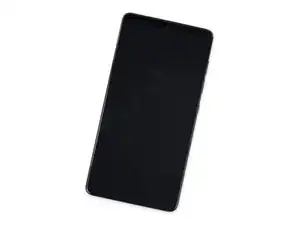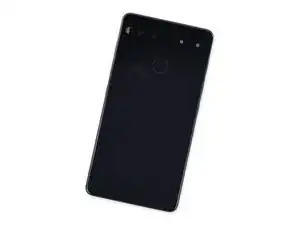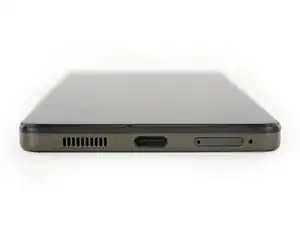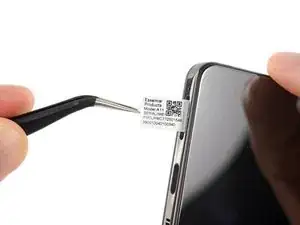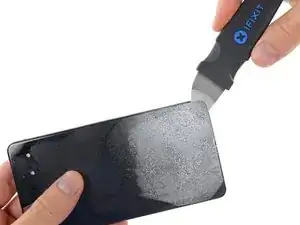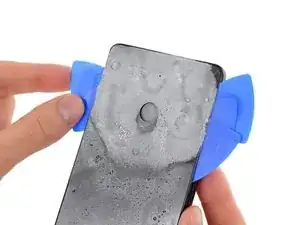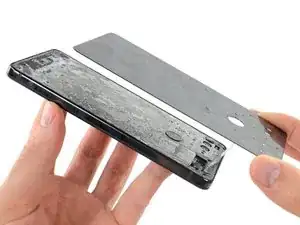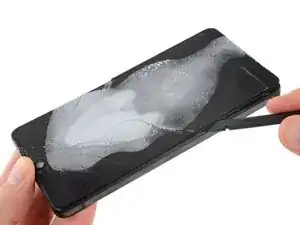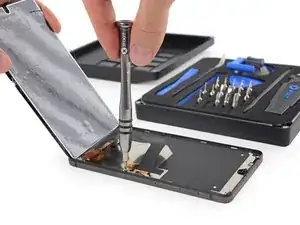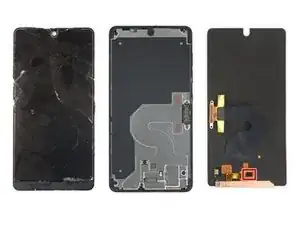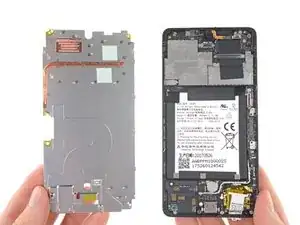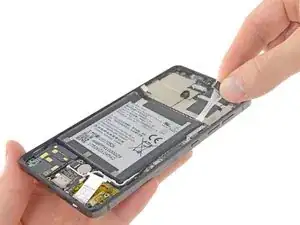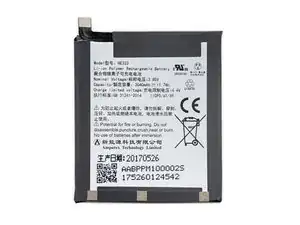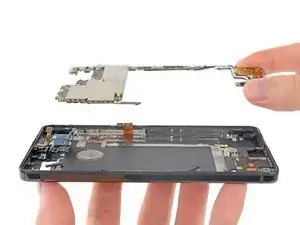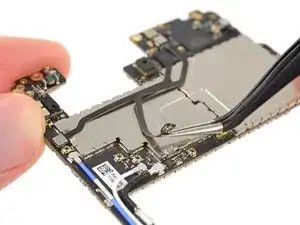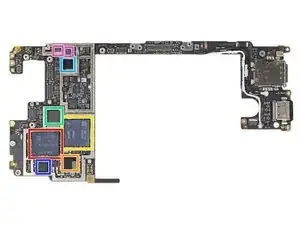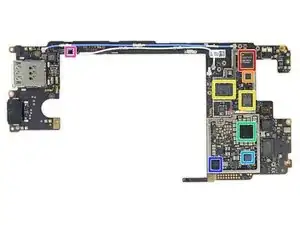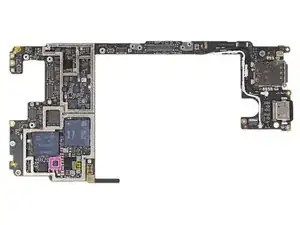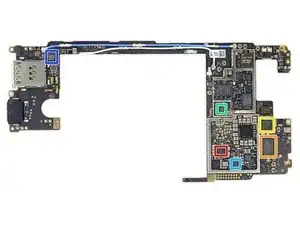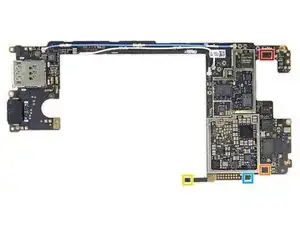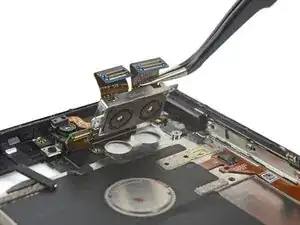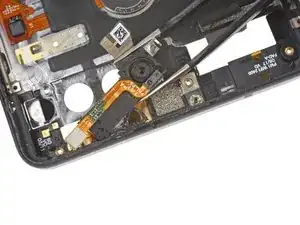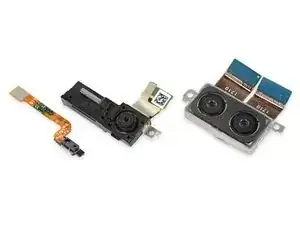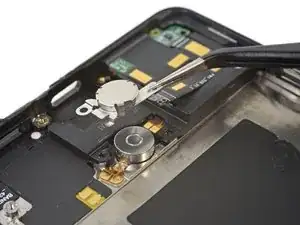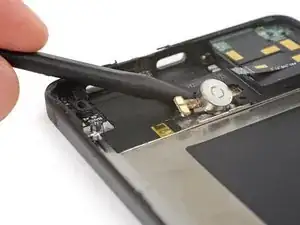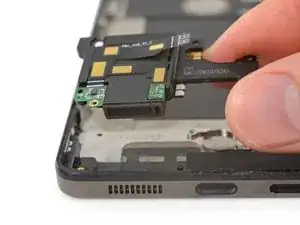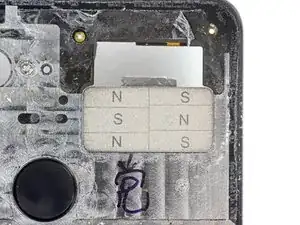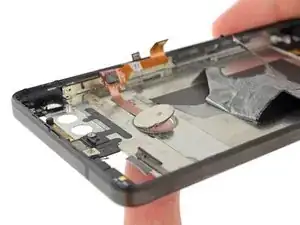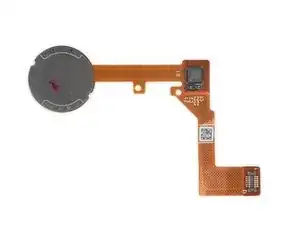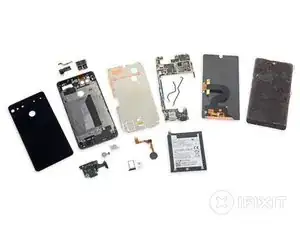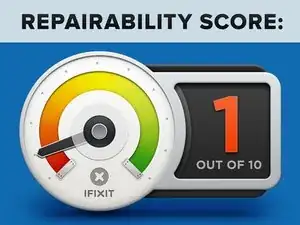Einleitung
There’s a newbie in the smartphone scene, and it’s bringing a whole lot less to the table. That’s right, in a world of "more is better," this phone has just the essentials—like a ceramic back, and a titanium chassis. Okay, it might actually be a little fancier than the name suggests—but we’ll have to open it up to find out for sure! Join us as we tear down the Essential Phone.
Teardowns are an essential part of the gadget world, so make sure to follow us on Facebook, Instagram, or Twitter for all of the necessary teardown and repair news.
Werkzeuge
-
-
Here are the Essential Phone's essentials:
-
Qualcomm Snapdragon 835 containing a Kryo 280 Octa-core CPU and an Adreno 540 GPU, paired with 4 GB RAM
-
128 GB UFS 2.1 onboard storage
-
5.71" LCD with 2560 × 1312 resolution (504 ppi)
-
Dual 13-megapixel rear cameras (one RGB + one monochrome) with image fusion technology
-
Front-facing camera with 8 MP resolution and 16:9 aspect ratio
-
802.11a/b/g/n/ac Wi‑Fi + MIMO Bluetooth 5.0 LE + NFC
-
-
-
In their quest for a bezel-less screen, Essential managed to carve out some space for a front-facing camera and a nigh-invisible slit for the earpiece speaker.
-
Around back, we find this phone's party trick—two power pins with built-in magnetic alignment. This is where the unessentials can latch on to the Essential Phone. While more are promised, as of now a 360° camera is the only accessory available from Essential.
-
We also spot a built-in dual camera system for those looking for good ol' ~180° photos, plus the fingerprint sensor responsible for securing the Essential's essentials.
-
-
-
Essential deemed a headphone jack unessential, providing just a USB-C connector instead. Risky.
-
Flanking the connector are the speaker grill, SIM card slot, and lower microphone. Just like in the Galaxy S8, the SIM eject and microphone holes seem a little too similar for comfort.
-
Essential left us a little surprise under the SIM card. With a totally blank and unbranded exterior, they hid all the identifying marks inside on a cute little tag.
-
We're amused to find that it doesn't come out all the way. Did Essential assemble the phone around this little tag?
-
-
-
It's past time to peek inside, but we're having no luck getting in. With no visible screws, we can only assume it's assembled with glue—but ever-increasing amounts of heat and suction haven't helped weaken this phone's hold on the display.
-
In desperation, we reverse polarity and try some Super Cold.
-
After a harrowing arctic expedition, it's the back cover that finally loosens first, revealing...
-
...Nothing! Beneath the giant glue pad, we find only the wrong ends of a couple screws and a midframe assembly.
-
-
-
We stay frosty, now more determined than ever to peel up the frozen LCD panel while dealing with the fallout from previous prying attempts.
-
Looks like we have a different definition of essential than Essential does—our Essential Electronics Tool Kit, designed to tackle all common electronics repairs, wasn't enough to crack this nut of a phone. Some intense reinforcements were necessary.
-
Even after peeling up the LCD panel, the interior continues to be well-guarded. After all that work, all we have to show for it is a busted display, a blank midframe shield, and a stray IC on the back of the display:
-
Qualcomm QTC800S touchscreen controller (likely)
-
-
-
After the unexpectedly difficult journey through the outside of the phone, we lift the midframe shield to finally reveal some internal components.
-
We spy: a heat pipe, a bunch of grounding fingers, and a battery with stretch-release adhesive ... that's trapped under another bracket.
-
Credit where credit is due: stretch-release adhesive is the most repair-friendly adhesive, and we wish more manufacturers would adopt it. Unfortunately it's kind of wasted on a phone that's this hard to get into.
-
The battery claims an 11.70 Wh capacity—not too shabby when compared with the Galaxy S8 at 11.55 Wh, the iPhone 7 at 7.45 Wh, or the OnePlus5 at 12.35 Wh.
-
-
-
That little mattress tag we found in the SIM slot removes quite easily from this side. It does indeed look like the phone was assembled with this little guy comfortably in place.
-
Meanwhile, we remove the massive motherboard, including its peninsular (Floridian?) charging port protuberance. The USB-C port is soldered straight to the motherboard. We are disappointed.
-
Speaking of removing the board...
-
-
-
Qualcomm released a development kit for the Snapdragon 835 showing us some silicon to expect. The chips we find are:
-
Samsung KLUDG8V1EE-B0C1 128GB UFS
-
Qualcomm PMI8998 PMIC
-
Samsung K3UH5H50MM-NGCJ 4 GB LPDDR4 mobile DRAM
-
Qualcomm WTR5975 gigabit LTE transceiver
-
Qualcomm WCN3990 2x2 802.11ac Wi-Fi with MU-MIMO companion
-
Qualcomm WCD9335 audio codec (likely similar to the WCD9311)
-
2x Qorvo QM48859 RF Fusion iFEM module
-
-
-
-
And the rest of the chips:
-
Qualcomm PM8005 power management IC
-
SiBeam SB6212CZU Snap wireless connector IC
-
Fresco Logic FL1100-1A0-LX USB 3.0 host controller
-
Qualcomm QET4100 envelope tracker
-
Texas Instruments TPS61235P 8 A synchronous boost converters
-
NXP Semiconductor Q2101 NFC controller (likely)
-
ON Semiconductor FSUSB43L10X 480 Mbps, USB 2.0 DPDT switch
-
-
-
-
With the motherboard on ice, we're finally able to tweeze out the dual camera module.
-
Either Essential accidentally put these camera pop connectors on backwards, or someone had too much fun figuring how to origami them into place.
-
Nearby, the selfie cam lies on a strip of glue and takes a little more work to extract, bringing the front-facing sensor cable along for the ride.
-
Surprise! The front-facing camera and earpiece speaker come as a single part. That tiny port lines up directly with the über-slim grille at the top of the phone!
-
The small flex cable terminates with possibly an AMS TMD3700 color sensor.
-
-
-
De-capping (literally, it looks like a cap) the vibrator, we're surprised there's no rubber dampener between these pieces.
-
The vibrator appears to be a standard pancake style cell motor, albeit a little taller than the usual short-stack.
-
Among the final components out: the sprawling loudspeaker and accompanying contact cable.
-
-
-
Magnets for those modular clip-on accessories are neatly labeled. They'd be tough to replace, but that's okay—you're likely to be rocking a different phone by the time they start to wear out in 700 years or so.
-
Not much remains besides the fingerprint sensor, glued comfortably in place on the back—a location that comes with some drawbacks, but is quickly becoming the de facto smartphone standard. Well, sort of.
-
-
-
For promising just the essentials, the Essential Phone took a lot more out of us than expected. It also took a lot more Super Cold than expected...
-
-
-
Essential Phone Repairability Score: 1 out of 10 (10 is easiest to repair)
-
To the extent that screws are used, they are all standard Phillips/JIS fasteners.
-
The battery is secured with repair-friendly stretch-release adhesive. Too bad it's so inaccessible.
-
The USB-C port is soldered to the motherboard, and with no headphone jack it'll be subject to extra wear.
-
Nearly invisible seams and copious adhesive means any attempt at repair is likely to inflict as much damage as it fixes.
-
Did we mention we had to freeze it?
-
64 Kommentare
wow horrific phone! 10/10 to iFixit for effort, 0/10 to Essential!
Will -
This is a phone where iFixit will have to determine if it's even worth selling replacement parts.
iPostIt -
the repair score should imo get a zero instead of a 1 because you cant open the %#*@ thing without destroying it.
My1 -

